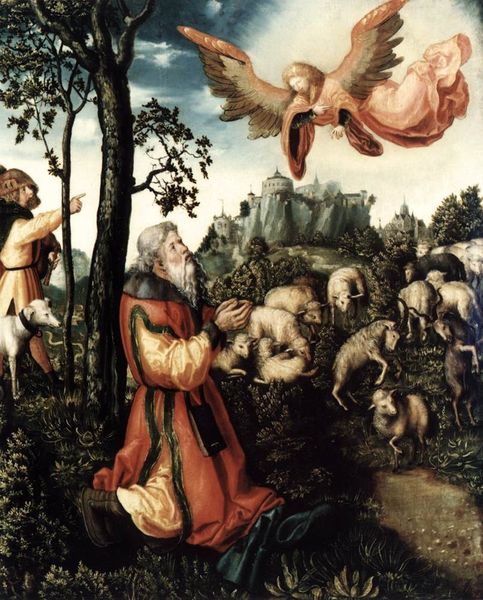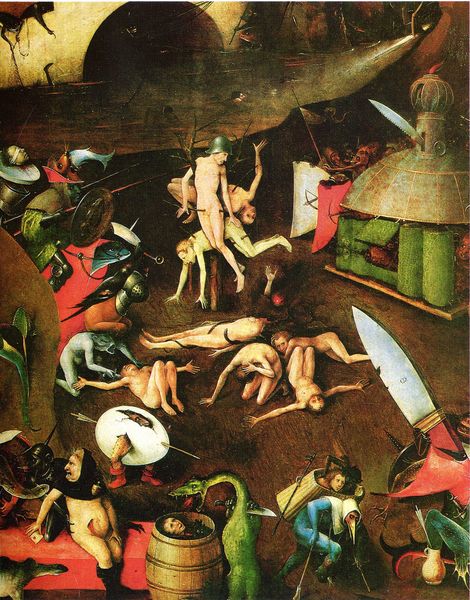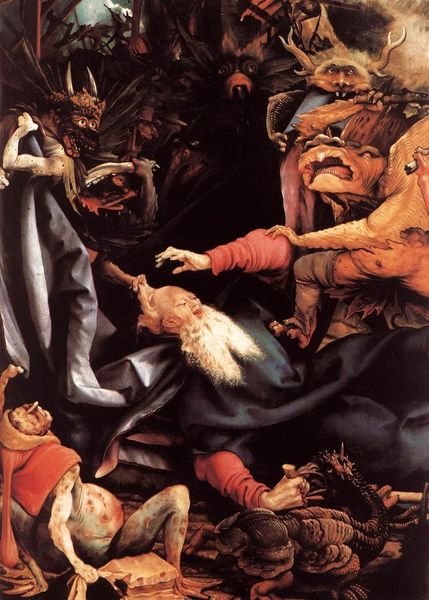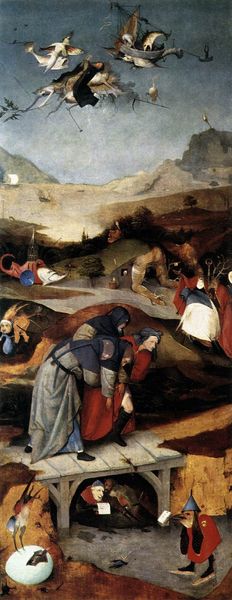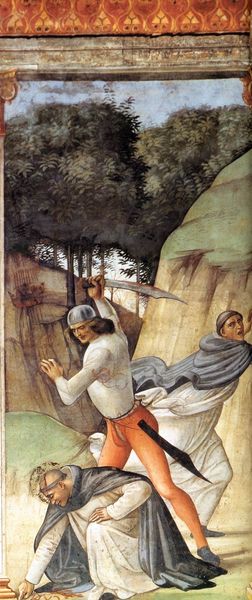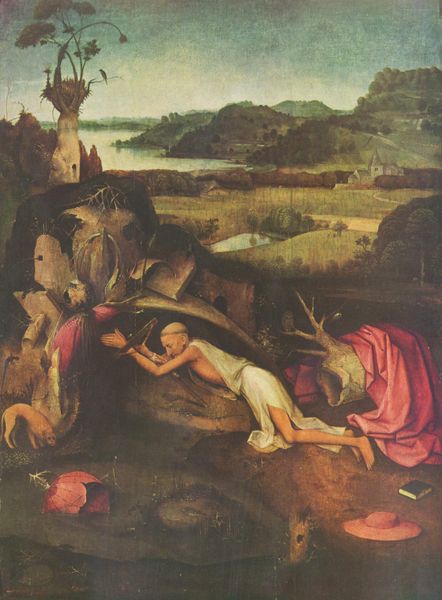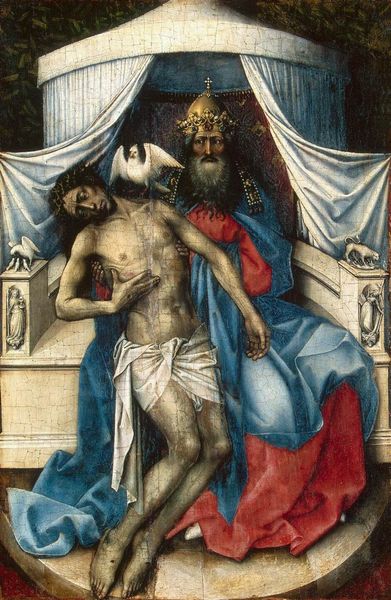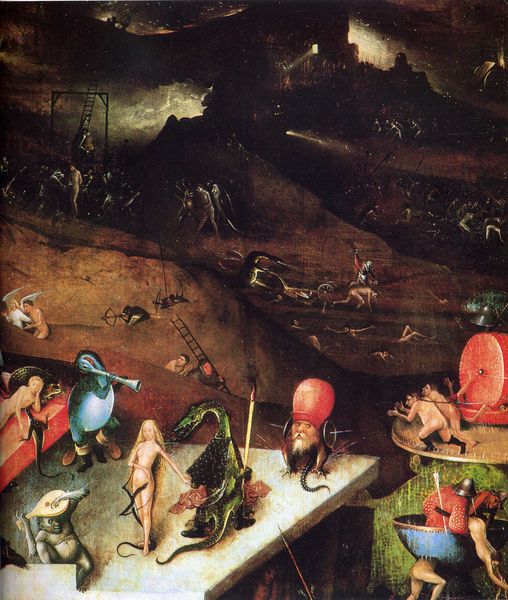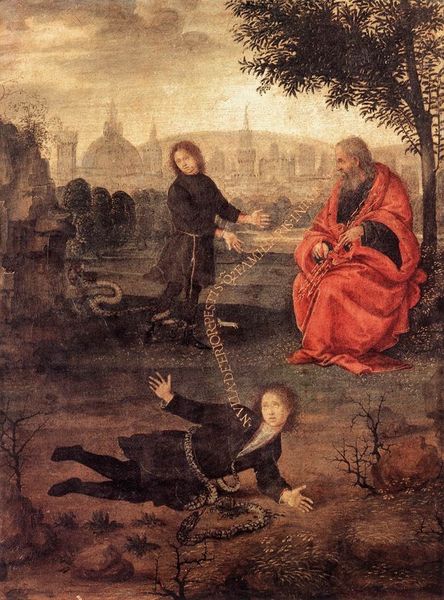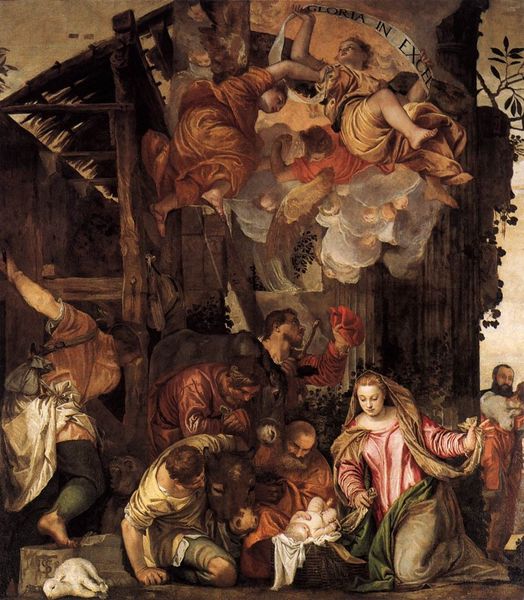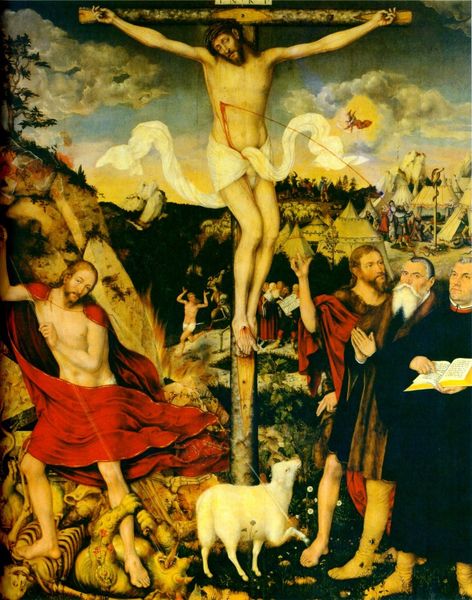
panel, oil-paint
#
allegories
#
panel
#
allegory
#
symbol
#
oil-paint
#
landscape
#
oil painting
#
christianity
#
history-painting
#
italian-renaissance
Copyright: Public domain
Editor: Here we have a detail from Hieronymus Bosch's oil on panel, "The Temptation of St. Anthony," painted around 1500. There is a very surreal quality, bordering on unsettling. What exactly are we looking at in terms of subject and historical influences? Curator: We are viewing a potent brew of religious anxiety and societal upheaval, painted during a time of enormous social and religious stress. This wasn't just a depiction of Anthony's tribulations; Bosch's work can be understood as an allegorical commentary on the state of society and the Church at the turn of the 16th century. Notice the array of bizarre figures. They aren't simply devils; they represent the temptations, vices, and heresies threatening the social order. What’s your interpretation of their appearance? Editor: I find their appearance quite bizarre and imaginative. Does Bosch take inspiration from common allegories of the time? Curator: Certainly. He taps into common fears surrounding heresy, the corruption of the clergy, and social breakdown but distorts them to almost unrecognizable degrees. Consider, though, where such imagery would be displayed and viewed. Who did Bosch imagine as his audience? And how might the visual chaos of the work reinforce certain anxieties among them? Editor: Perhaps this panel was meant to remind those faithful to the Catholic Church of what evils existed in the world, making their commitment even stronger in contrast. Knowing now that Bosch reflected broader social and religious issues, I find the piece even more intriguing. Curator: Precisely! The painting acts almost as a visual sermon, using the fantastical and grotesque to underscore anxieties of the time, not just for the sake of entertainment but to influence its audience and perhaps encourage adherence to societal norms. Editor: Thank you; I’m beginning to see a far more significant meaning. Curator: And that's the key, seeing how art, especially during moments of societal shift, can hold a mirror to both anxieties and the mechanisms of social control.
Comments
No comments
Be the first to comment and join the conversation on the ultimate creative platform.
